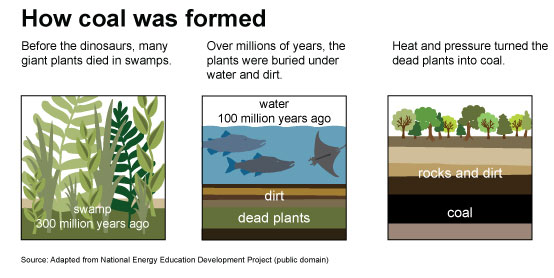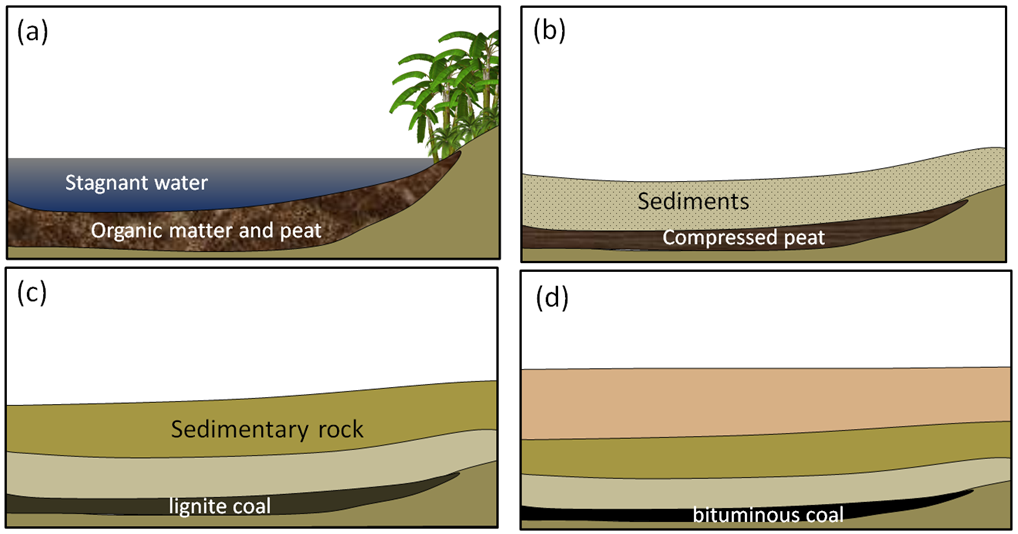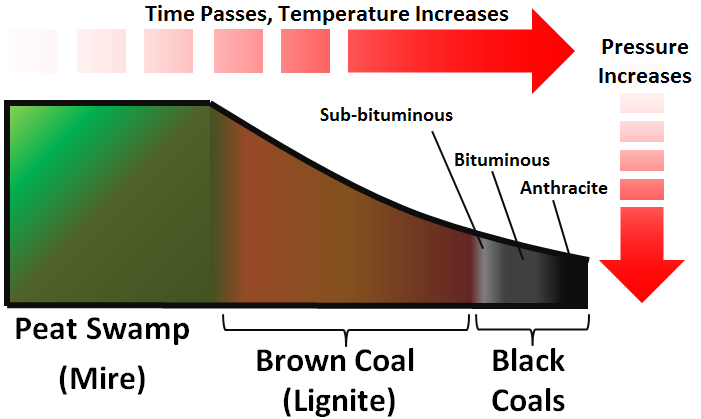Oil is an organic fluid formed by the diagenesis of buried organic material that migrates into reservoirs in porus crustal rocks such as sandstone. The three major characteristics of the valley were recorded.

Coal World Distribution Of Coal Britannica
Which of the following statements best describes how evaporite deposits form.

. A produces less greenhouses gasses. It is primarily used as a heat source to generate electricity. D produces less amount of heat.
Natural coal is formed due to the burial of plants and animals. Overlaying of sediments over the burial results in the formation of fossil fuels due to exposure to high pressure for a very long period of time. The movement of a glacier.
B consists of longer chains of hydrocarbon molecules. A minerals accumulating in soils as water percolates downward. So a dense layer of dead vegetation was.
Higher carbon dioxide are needed. Coal formation takes millions of years. Click card to see definition.
Coal is a fossil fuel that formed through the transformation of organic plant matter. Most coal formed approximately 300 million years ago from the remains of trees and other vegetation. Tap card to see definition.
The 3 main types of Fossil Fuels are Coal Oil Natural Gas. Although coal formation began in the Devonian the great coal beds found in Australia the eastern United States and England were formed during. What are 3 examples of fossil fules.
Petroleum and natural gas are a result of the buried marine life. In time there was thick layer of dead plants rotting in. This valley was most likely formed by-.
Coal natural gas and gasoline and other oils are all fossil fuels. Slowly the peat changed into coal. As plants died in these forests-mostly trees mosses ferns and reeds-they fell into the swamps.
That is why it is a natural resource that is exhaustive and non-renewable. What is the primary problem with using coal to help the growing demand for oil. Natural gas is formed when layers of decomposing plant and animal matter are exposed to intense heat and pressure under the surface of the Earth over millions of years.
Layers of dead decaying swamp plants formed a soft material called peat. How did coal form. It is used in households and in industries to accomplish various tasks.
A rapid series of earthquakes. Coal formed millions of years ago when the earth was covered with huge swampy forests where plants - giant ferns reeds and mosses - grew. Mineral precipitation out of a solution.
C mineral crystals that settle in a magma chamber. Coal is a solid black readily combustible fossil fuel that contains a large amount of carbon-based material - approximately 50 of its weight. The formation of coal takes a significant amount of time on the order of a few million years and the first coal-bearing rock units appeared about 290-360 million years ago at a time known as the Carboniferous or coal-bearing Period.
Coal is a biochemically produced sedimentary rock composed almost entirely or organic carbon formed by the compression of swamp vegetation. What best explains how crude oil is different from natural gas. Tap again to see term.
Coal deposits are known to have formed more than 400 million years ago. The distribution of worldwide coal deposits is uneven which is the result of peat formation at different times in the geological record in predominantly tropical latitudes and the subsequent drift of the continents to their present-day positions. Click again to.
It is also used to produce useful products such as coke tar and coal gas. As time passed the forest and swamps dried up. Over time layers of rock formed over the peat.
The peat changed into lignite a soft coal that is brown in color. New plants grew up to take their places and when these died still more grew. Which of the following statements best describe how evaporite deposits form.
The coal layers range in thickness from a few centimeters to 50 feet or more. The stems and leaves sink into the bottom of the water. E is found both onshore and in marine deposits.
Click again to see term. It was produced approximately 300 million years ago when swampy forests surrounded the earth. Tap card to see definition.
A result many coal deposits are composed of layers of coal separated by layers of sandstone shale or limestone. Which Best Explains How Natural Gas Deposits Formed. A coal deposit is a lenticular layer of carbon and carbon compounds formed from the remains of plants and basically ancient Geography explains how coal deposits are formed.
B minerals that remain within a soil during chemical weathering. It is the cheapest source of power fuel. The iron and steel industry depends heavily on fossil fuel for energy.
It is mainly used to generate heat and electricity. Which best explains how coal deposits formed. The formation of coal deposits continued through the Permian Triassic and Jurassic periods into the second coal age.
The appropriate answer is B. Most anthracite and bituminous coals occur within the 299- to 3592-million-year-old strata of the Carboniferous Period the so-called first coal age. As the plants grew some died and fell into the swamp waters.
The major regions with coal deposits are located in the Northern Hemisphere whereas the regions in the Southern Hemisphere with the. B consists of longer chains greenhouse gasses. The energy that the plants originally obtained from the sun is stored in the form of chemical bonds in the gas.
In comparison to light crude oil which of the following statements is NOT true with respect to heavy crude. Millions of years ago swamps covered much of Earth. A flood with rapidly moving water.
These remains were trapped on the bottom of swamps accumulating layer after layer. D minerals associated with hydrothermal activity. Students on a field trip observed a valley and wondered how it was formed.
C is a less dense form of energy.

Coal Deposits An Overview Sciencedirect Topics



0 Comments